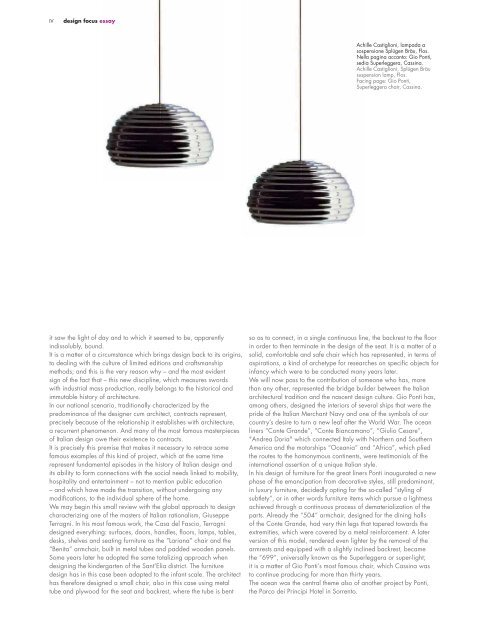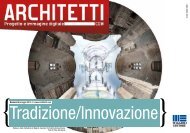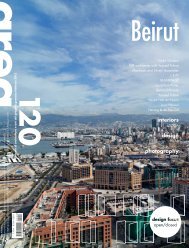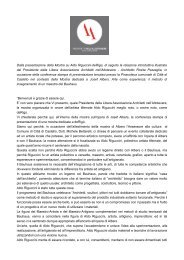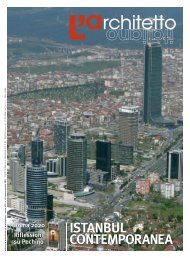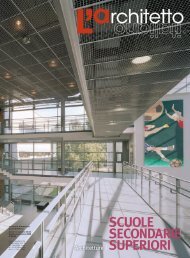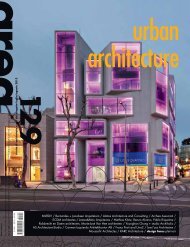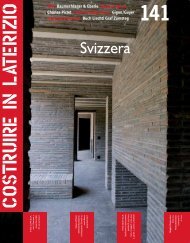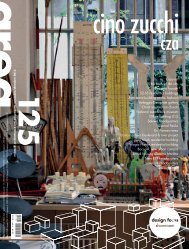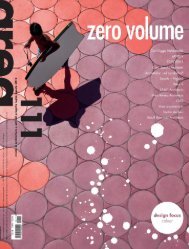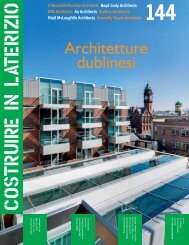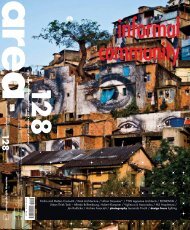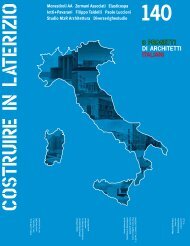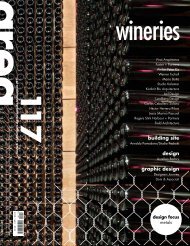Download AREA 127 - Architetti nell'Altotevere Libera Associazione
Download AREA 127 - Architetti nell'Altotevere Libera Associazione
Download AREA 127 - Architetti nell'Altotevere Libera Associazione
- No tags were found...
Create successful ePaper yourself
Turn your PDF publications into a flip-book with our unique Google optimized e-Paper software.
IVdesign focus essayAchille Castiglioni, lampada asospensione Splügen Bräu, Flos.Nella pagina accanto: Gio Ponti,sedia Superleggera, Cassina.Achille Castiglioni, Splügen Bräususpension lamp, Flos.Facing page: Gio Ponti,Superleggera chair, Cassina.it saw the light of day and to which it seemed to be, apparentlyindissolubly, bound.It is a matter of a circumstance which brings design back to its origins,to dealing with the culture of limited editions and craftsmanshipmethods; and this is the very reason why – and the most evidentsign of the fact that – this new discipline, which measures swordswith industrial mass production, really belongs to the historical andimmutable history of architecture.In our national scenario, traditionally characterized by thepredominance of the designer cum architect, contracts represent,precisely because of the relationship it establishes with architecture,a recurrent phenomenon. And many of the most famous masterpiecesof Italian design owe their existence to contracts.It is precisely this premise that makes it necessary to retrace somefamous examples of this kind of project, which at the same timerepresent fundamental episodes in the history of Italian design andits ability to form connections with the social needs linked to mobility,hospitality and entertainment – not to mention public education– and which have made the transition, without undergoing anymodifications, to the individual sphere of the home.We may begin this small review with the global approach to designcharacterizing one of the masters of Italian rationalism, GiuseppeTerragni. In his most famous work, the Casa del Fascio, Terragnidesigned everything: surfaces, doors, handles, floors, lamps, tables,desks, shelves and seating furniture as the “Lariana” chair and the“Benita” armchair, built in metal tubes and padded wooden panels.Some years later he adopted the same totalizing approach whendesigning the kindergarten of the Sant’Elia district. The furnituredesign has in this case been adapted to the infant scale. The architecthas therefore designed a small chair, also in this case using metaltube and plywood for the seat and backrest, where the tube is bentso as to connect, in a single continuous line, the backrest to the floorin order to then terminate in the design of the seat. It is a matter of asolid, comfortable and safe chair which has represented, in terms ofaspirations, a kind of archetype for researches on specific objects forinfancy which were to be conducted many years later.We will now pass to the contribution of someone who has, morethan any other, represented the bridge builder between the Italianarchitectural tradition and the nascent design culture. Gio Ponti has,among others, designed the interiors of several ships that were thepride of the Italian Merchant Navy and one of the symbols of ourcountry’s desire to turn a new leaf after the World War. The oceanliners “Conte Grande”, “Conte Biancamano”, “Giulio Cesare”,"Andrea Doria" which connected Italy with Northern and SouthernAmerica and the motorships “Oceania” and “Africa”, which pliedthe routes to the homonymous continents, were testimonials of theinternational assertion of a unique Italian style.In his design of furniture for the great liners Ponti inaugurated a newphase of the emancipation from decorative styles, still predominant,in luxury furniture, decidedly opting for the so-called “styling ofsubtlety”, or in other words furniture items which pursue a lightnessachieved through a continuous process of dematerialization of theparts. Already the “504” armchair, designed for the dining hallsof the Conte Grande, had very thin legs that tapered towards theextremities, which were covered by a metal reinforcement. A laterversion of this model, rendered even lighter by the removal of thearmrests and equipped with a slightly inclined backrest, becamethe “699”, universally known as the Superleggera or super-light;it is a matter of Gio Ponti’s most famous chair, which Cassina wasto continue producing for more than thirty years.The ocean was the central theme also of another project by Ponti,the Parco dei Principi Hotel in Sorrento.


